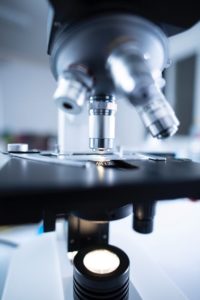What is In-vitro Fertilization?
Any medical procedure can be daunting and confusing, and sometimes medical professionals have difficulty explaining procedures in layman’s terms. As a result, patients walk away not exactly sure what they’re facing.
For example, we’ve all likely heard of in-vitro fertilization (IVF) and the miracle that it is, but do we really know how it works and why?
Getting Started with In-vitro Fertilization
 Often times, IVF is attempted after other fertility treatments have failed. It can be quite an expensive procedure, but many healthcare policies cover the expenses, at least for a round or two. Nevertheless, the thought of starting the in-vitro process can be a bit nerve-wracking but knowing what’s coming can really be helpful to both people involved in the process.
Often times, IVF is attempted after other fertility treatments have failed. It can be quite an expensive procedure, but many healthcare policies cover the expenses, at least for a round or two. Nevertheless, the thought of starting the in-vitro process can be a bit nerve-wracking but knowing what’s coming can really be helpful to both people involved in the process.
First of all, in-vitro means “in the lab” and fertilization, of course, refers to conception. Therefore, in-vitro fertilization involves an attempt to fertilize an egg or eggs in a petri dish using sperm cells retrieved from the male. If all proceeds as planned, one or more of those eggs will become fertilized and become an embryo. The embryos will then be planted back into the uterus.
That’s the short explanation. But, of course, there’s a lot more to it.
Stimulating the Ovaries
The normal female body only produces about one or two viable eggs each month, but to complete in-vitro, lots of eggs are needed. The more, the better. So fertility drugs are used to stimulate the ovaries and help the patient produce eggs.
Gonadotropins are the strongest of all ovulation-stimulating drugs and are usually used during IVF cycles. They are self-injected one or more times a day for a week to 10 days, depending on the treatment protocol determined by the doctor. These are the most successful IVF drugs though side effects are present and can be uncomfortable. They include headaches, nausea, bloating, breast tenderness, mood swings, and irritation at the injection site.
Those taking ovary-stimulating drugs will be monitored by their doctor during use. This will include testing such as bloodwork and ultrasounds. This monitoring is ultra-important as it allows the doctor to adjust the medication as needed according to what he views in the blood tests and ultrasounds. Towards the end of the process, the patient may need to be seen daily.
Finally, a last shot is given that will help the eggs complete their growth and development before they are retrieved. This involves the injection of a different drug known as a human chorionic gonadotropin. This shot will be precisely timed for success. Shortly thereafter, retrieval will happen.
Completing the IVF Process
The eggs will then be retrieved by means of a procedure that is usually fairly pain-free for the patient. A light sedative is often used that will allow the woman to “sleep” while a fine needle is used to reach the ovaries and retrieve the eggs. (Light spotting and cramping may happen after the procedure.)
After retrieval, an embryologist will evaluate the eggs and choose the ones he/she believe are fit for fertilization. Then semen from the father/donor will then be used to attempt to fertilize the eggs.
Once fertilization occurs, embryos will be transferred to the mother, either immediately – known as a “fresh” transfer, or in some cases, at the start of the women’s next cycle. In that case, the embryos will be “frozen” or cryo-preserved until needed.
The number of embryos transferred will depend on the quality of the embryos and what the doctor believes is best for the individual patient.
Depending on age, anywhere from one to five embryos may be transferred, with two being the most common option.
The Waiting Game
And then the wait begins. During the next two weeks, the patient is given progesterone supplements for support. But the hardest part of this step of the process is waiting to see if any of the embryos “took” and if pregnancy will occur. Many women and couples describe it as the most difficult part of IVF, even harder than all the injections and procedures.
A serum pregnancy test (bloodwork) will be administered about 10-12 days after the egg transfer to determine pregnancy. It may be repeated every few days. If it’s positive, the patient will then be monitored throughout the pregnancy to ensure success. If it’s not, the patient has the option of trying again in the not too distant future.
Though having a treatment cycle fail is disheartening, it’s important to remember that many couples require more than one IVF cycle for success.
Go back